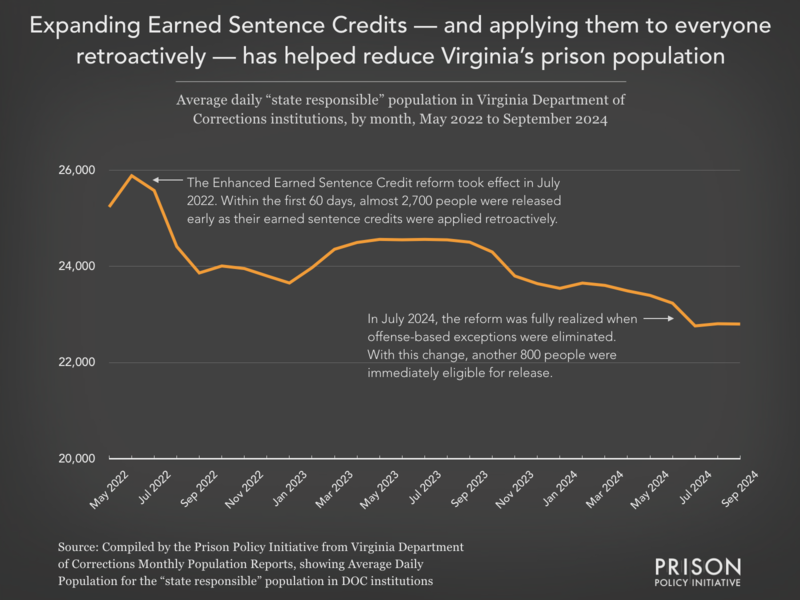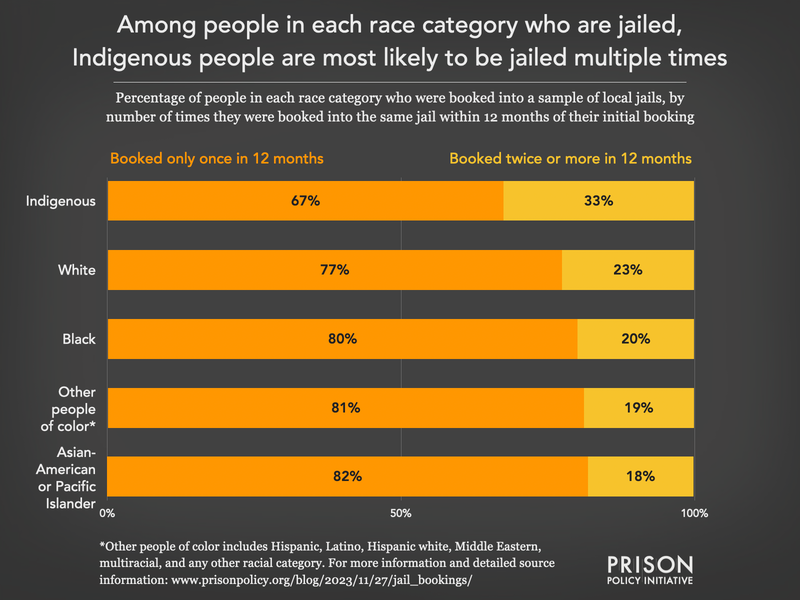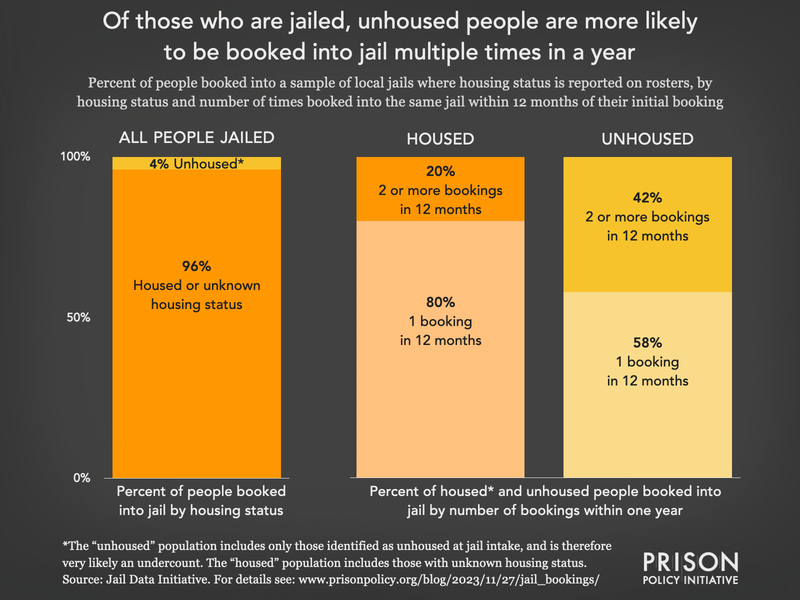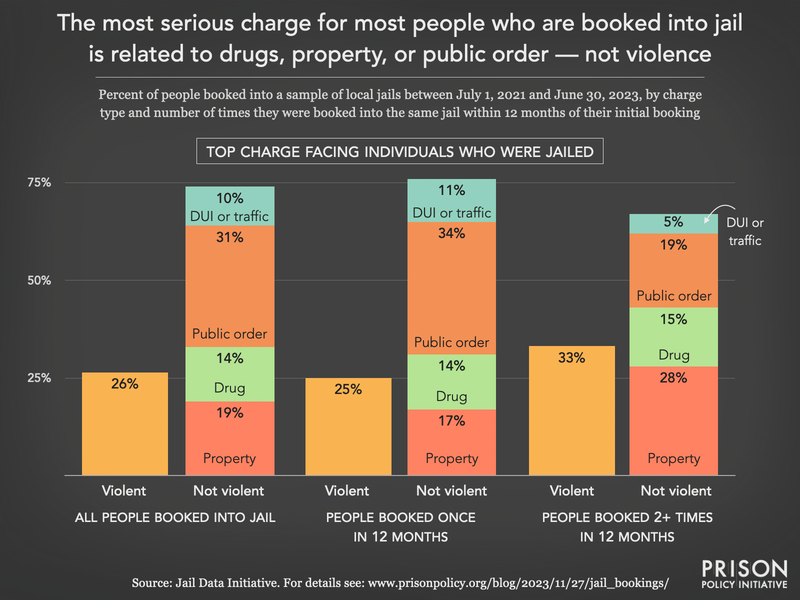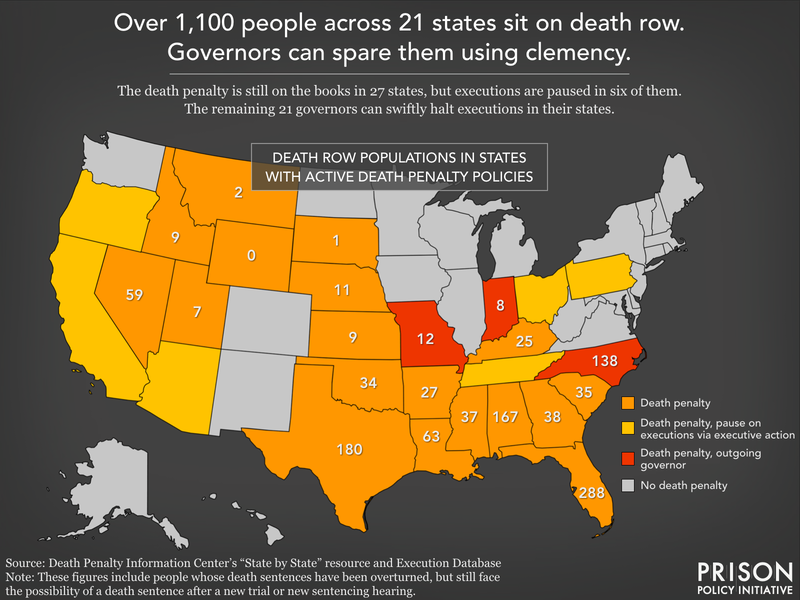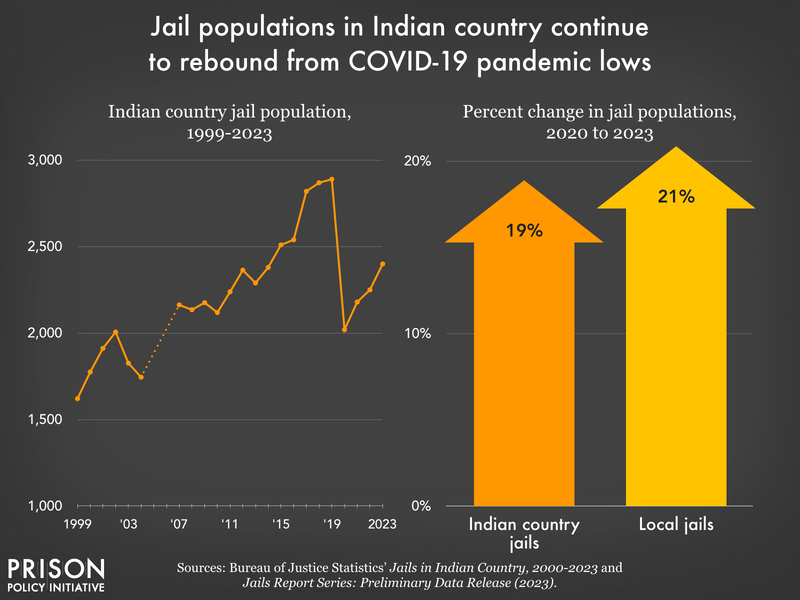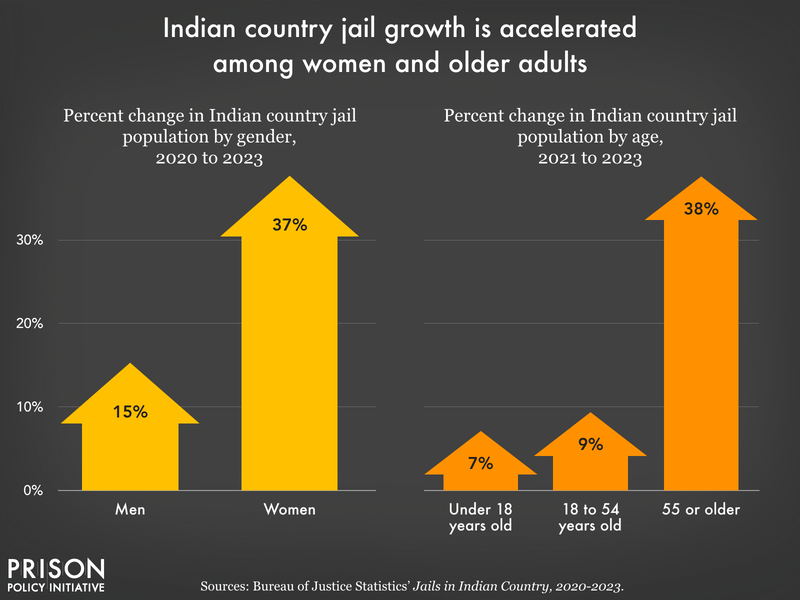Why jails and prisons can’t recruit their way out of the understaffing crisis
Jails and prisons across the country have record-high vacancies, creating bad working conditions for corrections staff and nightmarish living conditions for incarcerated people. Why haven’t pay raises, benefits, and new facilities turned recruitment around, and what does that tell us about the state of mass incarceration?
by Brian Nam-Sonenstein and Emmett Sanders, December 9, 2024
Prisons and local jails struggled with staffing well before the COVID-19 pandemic spurred a national labor shortage, and they haven’t bounced back since. Recruitment and retention are still a high priority for corrections agencies,1 with nearly half reporting between 20 and 30% of their workers leaving each year. Many departments have tried increasing compensation, lowering employment requirements, hiring more part-time workers, and building new facilities to attract recruits but it hasn’t worked. Why not? Because “understaffing” is an untreatable symptom of mass incarceration — not a recruitment problem.
When there are fewer workers than necessary to operate facilities as planned, correctional authorities cut back on the things staff are needed to manage, and conditions get worse: people are stuck in ‘lockdown’ conditions, they’re transferred around, housing units are consolidated, access to services and programming is limited, and fights break out. As conditions deteriorate, fewer people want to work in these facilities. Decarceration should seem like the obvious way to break the cycle, but it’s readily dismissed by corrections leaders2 whose livelihoods depend on mass incarceration. In this light, understaffing is a bad way to understand what’s plaguing jails and prisons but a good way to demand more investment; it’s why recruitment is the only solution corrections can offer and a dead end at the very same time.
It has become clichéd for corrections departments and news media to blame understaffing for nearly every problem in jails and prisons; everything would be so much better (the thinking goes) if departments simply had enough workers. This framing conveniently overlooks mass incarceration as a policy choice, restricting the universe of available policy solutions to greater investments in locking people up. Many of the issues for which “understaffing” is blamed are fundamental to mass incarceration, and are best addressed through decarceration — not a jobs program for corrections officers or further investments in surveillance and imprisonment. Decarceration takes incarcerated people (and workers) out of harm’s way while freeing up resources for more constructive uses in the community, which are far more effective at deterring crime and ensuring safety than criminalization.
In this briefing, we look at what’s happening to the corrections workforce, how staff shortages harm incarcerated people and workers, and how corrections agencies have tried (and failed) to address staffing problems without addressing mass incarceration. In the end, we urge jurisdictions to prioritize release and reduced admissions over futile attempts to make mass incarceration “work.”
Staffing is down despite annual wage growth
Prisons and local jails have shed thousands of full-time workers in recent years. Despite rising wages, this decline in the workforce — which began to accelerate in 2020 — is expected to continue into the next decade and has been markedly worse in state prisons than in local jails.
Employment. State prisons lost 12% of their full-time workforce between 2013 and 2023, with nearly all (93%) of this decline coinciding with the pandemic, according to our analysis of the Census Bureau’s Annual Survey of Public Employment & Payroll.3 Local jails lost 2% of their full-time workers over the past decade, with a 7% decline in the workforce since 2020.4 Meanwhile, part-time employment5 in jails and prisons has grown since the first year of the pandemic.6 The total correctional workforce7 has shrunk by 11% in state prisons and 7% in local jails since 2020, and agencies are expected to see, on average, a 6% decline in employment between 2023 and 2033.8

Wages. According to the Bureau of Labor Statistics’ Occupational Employment and Wage Statistics,9 the median annual wage for correctional officers and jailers in 2023 was $53,300.10 The median corrections salary grew by 35% in the decade between 2013 and 2023, and 12.5% since 2020 alone. Wages have remained relatively consistent with inflation for the last 10 years, but these figures notably exclude premium wages,11 which are significant and have skyrocketed in recent years. There are no public data on premium pay, but news reports indicate that workers racked up hundreds of millions of dollars of these additional wages in many prison systems.12 While overtime puts more money in workers’ pockets, demanding work schedules burn people out and deter them from seeking or keeping corrections jobs.

Jail and prison officials consistently blame low wages as an obstacle to recruitment, but it’s worth noting that the median annual corrections wage ($53,300) is higher than professions requiring more training and education, like EMTs ($53,180) and counselors and social workers ($44,040). Additionally, corrections work isn’t among the top 10 most dangerous jobs in America, but their median annual salary is still higher than those for jobs that are, such as loggers ($48,910 per year), roofers ($50,030), delivery truck drivers ($39,950 per year), and construction workers ($44,310 per year).
Recruitment strategies can’t address fundamental problems in jails and prisons
The narrow focus on recruitment as the antidote to understaffing poses serious risks to the health and well-being of incarcerated people and workers (albeit in very different ways). To be clear, incarcerated people undeniably face the worst harms of understaffing. Incarcerated populations are consolidated and crowded together when there’s not enough staff, and they’re often transferred to other facilities and housing units. Those transfers disrupt supportive connections to local communities, programming, and services like visitation, medical services, or the commissary. Crowding and transfers also lead to violence and the spread of infectious diseases. Lockdowns and other restrictions on movement have become more brutal and frequent without the necessary staff to facilitate movement throughout facilities or to and from court. As a result, time out-of-cell is significantly limited.13 All of this has contributed to the deterioration of incarcerated peoples’ mental health and their inability to get care, raising the risk of death and suicide: in-custody deaths have spiraled out of control as staff shortages intensified, forcing more people to endure the trauma of witnessing and being victims of violence. Understaffing is routinely blamed for deaths in part because there is also a shortage of medical and social work staff — shockingly, these professionals are sometimes tapped to handle officer duties when there is a shortage of trained security staff.
While our work focuses mostly on how the system harms incarcerated people and their communities, we’ve written before about how corrections work harms workers. A recent job posting for a Georgia corrections officer provides an instructive example, noting that applicants must be prepared to work nights, weekends, and holidays; be exposed to violence and disease; strip search people; and kill them “if necessary:”

In addition to working in the same overcrowded and dangerous environments facing incarcerated people, corrections workers are exposed to physical health risks such as injury or an increased risk of infectious diseases including COVID-19, tuberculosis, and hepatitis B. They have high rates of death and suicide from routinely experiencing trauma: one 2013 study of nearly 3,600 corrections professionals from all over the country estimated that 34% of correctional staff in security roles have post-traumatic stress disorder (PTSD) while 31% have depression — rates that are much higher than the 6 out of every 100 people (or 6% of the U.S. population) who will have PTSD at some point in their lives.
With that in mind, it’s no wonder why several recruitment strategies have failed to make these jobs more attractive:
Pay increases haven’t worked: As we’ve noted, the median annual salary for corrections officers has increased year over year. Agencies have tried to use higher salaries, signing bonuses, generous benefit packages, and other compensation to recruit workers but this generally hasn’t made a difference. Atlanta’s Fulton County Jail, which has a lot of problems including that it hasn’t had enough staff for many years, deployed hiring bonuses and the highest salaries of any sheriff’s department in the state but still struggles to fill positions.14 Meanwhile, the Colorado Department of Corrections has tried offering up to $7,000 in bonuses and received around $192 million to increase compensation, recruitment/retention incentives, staff overtime, and contracted personnel, but still faces a major labor shortage.
Easing employment requirements hasn’t worked: Corrections officials have also tried to relax various employment requirements to boost recruitment. In most cases, this involves changing the minimum or maximum age requirement to work as a corrections officer. In Mississippi, teenagers are expected to manage people incarcerated in state prisons with as little as an 8th-grade education, and the state still ranks among the worst of the worst for understaffing. The federal Bureau of Prisons, meanwhile, faces staff shortages despite temporarily raising its maximum age for corrections officers to 40 years old.
Staff wellness programs haven’t worked: Employee wellness programs are a popular approach to making corrections workplaces more attractive. The American Correctional Association surveyed 45 state prison systems and 25 local jails and found that 96% of those corrections agencies offered some form of employee wellness programming. However, over half of the 61 corrections agencies that reported barriers to wellness programs said that “lack of adequate staffing” was a barrier to implementation.
New facility construction hasn’t worked: Correctional facilities are often cited as obstacles to recruitment for reasons that include their vulnerability to climate change and old and crumbling architecture. We’ve previously written about the dangers of new jail and prison construction (and how to fight it), and one of the most pernicious myths supporting these projects is that newer, nicer facilities will stimulate recruitment by improving working conditions for staff. Yet time and time again, agencies struggle to staff new facilities. Marion County, Indiana built a new $570 million campus for its courts and a jail, arguing it would help resolve staff shortages, which it did not. Denver, Colorado spent millions to renovate a jail and improve working conditions and still can’t fully staff it.
Other desperate measures: Florida and West Virginia have called in the National Guard to maintain a brutal state of emergency rather than release people in response to staff shortages. West Virginia recently ceased its emergency as staffing levels have improved compared to two years ago, but overcrowding and staff vacancies persist nonetheless. Meanwhile, Nevada has contemplated turning to drones and monitoring shackles, and the federal government is considering taking over Alabama prisons amid hundreds of deaths, years of understaffing, and a plan to build a new $1 billion prison.15
Conclusion
Understaffing is a real problem in jails and prisons, and is directly tied to the living conditions of incarcerated people. It is an inevitable consequence of the U.S.’s limitless dependence on criminalization and mass incarceration — not a failure to provide higher wages, new prisons, and yoga classes. We know this because narrowly focusing on the needs of the corrections workforce has not made a dent in staffing, nor has it improved conditions for incarcerated people.
Decarceration is the most straightforward, workable solution to the problems for which “understaffing” is blamed. This means increased use of parole and other forms of release, ending cash bail, reducing arrests and police contact, and other interventions aimed at removing people from the system and preventing more people from going in are all targeted policy solutions to understaffing. When policymakers abandon the idea that these problems can be addressed as narrow recruitment and human resources issues, and instead move away from mass criminalization and incarceration, we will finally see real movement on these issues and real relief for workers and incarcerated people alike.
Footnotes
-
Recruitment and retention are high priorities according to recent surveys from the Correctional Leaders Association. Half of the survey respondents — including administrators for all 50 state prison systems, four territories, four large jail systems, and military corrections — report officer turnover rates in the 20-30% range annually, with 38% of staff leaving within a year and 48% leaving within one-to-five years. ↩
-
One report from the American Correctional Association on staffing notes that “the physical work environment includes noise level, not being able to bring one’s cell phone into work, or limited access to natural lighting. Environmental factors have been linked to increased sick leave, stress, and employee substance use. Unfortunately, many of these realities cannot be changed or they require significant expense to improve.” ↩
-
To calculate these figures, we used national-level full-time and part-time Corrections employment data for 2013 to 2023. The survey collects state and local government employee data from all agencies of the 50 state governments and approximately 91,750 local governments. According to the methodology, these data cover the pay period including March 12 of each survey year. ↩
-
Some state prison and local jail systems saw particularly large drops in their full-time staff rosters. For example:
Full-time state prison workers
State Percent change in workers,
2013-2023Percent change in workers,
2020-2023Arkansas -18% -17% Georgia -40% -21% Mississippi -34% -4% Nevada -26% -23% New Jersey -25% -20% North Carolina -43% -35% Texas -18% -14% Full-time local jail workers
State Percent change in workers,
2013-2023Percent change in workers,
2020-2023New Mexico -27% -19% New York -7% -16% Wisconsin -13% -17% Data compiled by the Prison Policy Initiative using the Census Bureau’s Annual Survey of Public Employment & Payroll. ↩
-
Notably, this temporary strategy to cope with understaffing likely has a limited shelf life. Part-time workers do not receive the same benefits and compensation packages offered to full-time employees, and part-time workers likely won’t fill enough of the gaps in the schedule to meaningfully reduce the reliance on mandatory overtime. ↩
-
The number of part-time workers in state prisons grew by 45% between 2021 and 2023, adding 3,391 part-time workers while losing 33,431 full-time workers (-8%). In local jails, part-time employment grew by 5% in that time, recruiting 587 part-time employees as full-time employees declined by 9,645 (-4%). In all, part-time workers offset full-time workers by only 10% in state prisons and 6% in local jails. ↩
-
Here, “total correctional workforce” refers to combined full- and part-time employees in state prisons and local jails. ↩
-
There are an estimated 31,000 openings for corrections officers and bailiffs each year due to high turnover, retirement, and workers switching careers.
↩ -
To calculate these figures, we used median annual wage data for Correctional Officers and Jailers for each year from 2013 to 2023. According to the methodology for this series, the Bureau of Labor Statistics survey reports wages as straight-time, gross pay, exclusive of premium pay. Base rate; cost-of-living allowances; guaranteed pay; hazardous-duty pay; incentive pay, including commissions and production bonuses; and tips are included, while overtime pay, severance pay, shift differentials, nonproduction bonuses, employer cost for supplementary benefits, and tuition reimbursements are excluded. ↩
-
The lowest 10% of corrections workers made around $38,340 per year while the highest 10% made around $87,670 per year. Importantly, these wage data exclude premium pay, such as overtime and shift differential pay. ↩
-
The U.S. Department of Labor defines premium pay as “Extra compensation paid at a ‘premium rate’ for certain hours worked by an employee because such hours are hours worked in excess of eight in a day, or in excess of 40 hours in the week, or in excess of the employee’s normal working hours or regular working hours, as the case may be.” This pay is offered at a premium rate, which the DOL notes “may not be less than one and one-half times the rate established in good faith for work performed in nonovertime hours on other days.” This includes overtime, which is mandatory in many prison systems as fewer workers have to work longer hours, as well as shift differential pay, earned when people work outside of their normal hours. ↩
-
For example:
- Despite heavy investments in recruitment in New Hampshire in recent years, the department of corrections ran up a $3.4 million deficit trying to operate state prisons with roughly half its workforce. Corrections leaders have asked lawmakers to pull funding from other departments to fill this gap.
- In Nebraska, corrections staff made $22 million in overtime pay in 2023. Officials have tried (and failed) to use higher wages as a recruitment tool even though some officers make more than some of the department’s doctors and dentists in a year.
- The Illinois Department of Correction’s staff collectively worked nearly 2 million hours of overtime during the 2022 fiscal year, costing the department $95.5 million. IDOC has tried to argue that rebuilding a women’s prison will help drive recruitment, reducing its reliance on overtime.
-
A report from the John Howard Association sheds light on the situation in Illinois. For example, it reported results from a survey of 8,616 people incarcerated in that state’s prisons found that 67% said they “spend too long locked up in their cells,” and around 26% disagreed with the statement that they have the “opportunity to go to yard at least twice a week.” They also found administrative-based lockdowns (usually tied to a lack of staffing) accounted for a majority of lockdowns over the last six years — specifically, 86.5% of all lockdowns in FY 2024. Between 2019 and 2024, lockdown days increased nearly 549%, from 242 lockdown days to 1,570 lockdown days – and even this may be an “incomplete picture” because, the authors write, “individual housing areas may be locked down and not captured in public reporting, which appear to only reflect facility-wide restrictions at most prisons.” (For context, the report explains, “Lockdowns typically mean that all incarcerated people in a facility are subject to the extreme restrictions consistent with solitary confinement or restrictive housing. During these periods, incarcerated people are confined to their cells or sleeping areas for 22 to 24 hours per day with limited access to activities such as education, programming, visitation, recreation, religious services, and communal meals.”) ↩
-
Ironically, the neighboring Clarke County sheriff has warned his jail will look like Fulton County if officers don’t receive a 10.5% pay increase even though such increases have made no meaningful difference in conditions in Fulton County. ↩
-
Conditions in Alabama prisons have become so dire that some incarcerated people are calling for the federal government to step in. ↩




